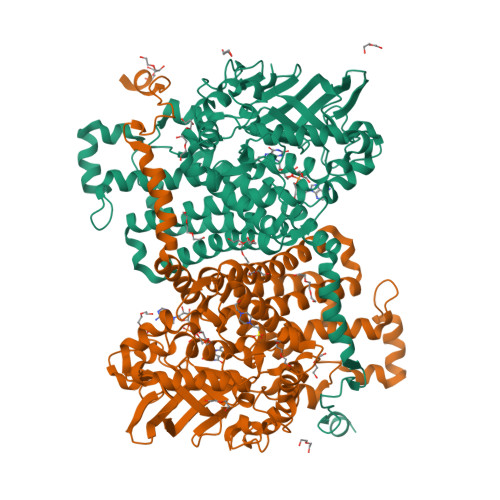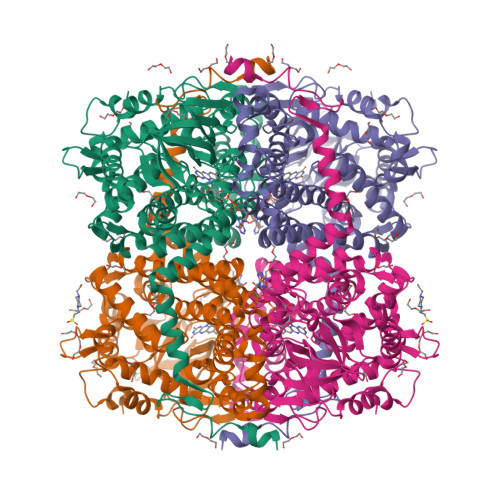Structural and Functional Characterization of 4-Hydroxyphenylacetate 3-Hydroxylase from Escherichia coli.
Deng, Y., Faivre, B., Back, O., Lombard, M., Pecqueur, L., Fontecave, M.(2020) Chembiochem 21: 163-170
- PubMed: 31155821
- DOI: https://doi.org/10.1002/cbic.201900277
- Primary Citation of Related Structures:
6QYH, 6QYI - PubMed Abstract:
The hydroxylation of phenols into polyphenols, which are valuable chemicals and pharmaceutical products, is a challenging reaction. The search for green synthetic processes has led to considering microorganisms and pure hydroxylases as catalysts for phenol hydroxylation. Herein, we report the structural and functional characterization of the flavin adenine dinucleotide (FAD)-dependent 4-hydroxyphenylacetate 3-monooxygenase from Escherichia coli, named HpaB. It is shown that this enzyme enjoys a relatively broad substrate specificity, which allows the conversion of a number of non-natural phenolic compounds, such as tyrosol, hydroxymandelic acid, coumaric acid, hydroxybenzoic acid and its methyl ester, and phenol, into the corresponding catechols. The reaction can be performed by using a simple chemical assay based on formate as the electron donor and the organometallic complex [Rh(bpy)Cp*(H 2 O)] 2+ (Cp*: 1,2,3,4,5-pentamethylcyclopentadiene, bpy: 2,2'-bipyridyl) as the catalyst for FAD reduction. The availability of a crystal structure of HpaB in complex with FAD at 1.8 Å resolution opens up the possibility of the rational tuning of the substrate specificity and activity of this interesting class of phenol hydroxylases.
Organizational Affiliation:
Laboratoire de Chimie des Processus Biologiques, Collège de France, Sorbonne Université, CNRS, UMR 8229, PSL Research University, 11 place Marcelin Berthelot, 75005, Paris, France.






















